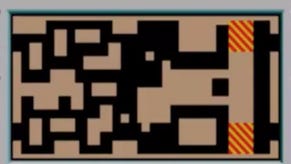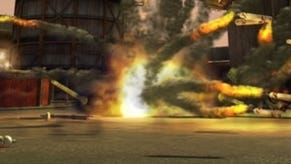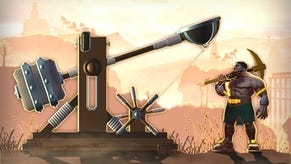Tech Analysis: Crackdown 2 demo
Good job, Agent.
It's been a long time coming. Crackdown is something of a fan favourite for many Xbox 360 owners, and the confirmation of a much-delayed sequel from Ruffian Games was some of the most exciting news to emerge at last year's E3.
But actually, it doesn't seem to have been a long time in development. Ruffian itself is a fairly new outfit, and the development schedule for this one has been brief compared to the typical AAA title (if there is such a thing). There was nothing to show at the E3 2009 announcement other than a CG trailer, yet the final game passed Microsoft's certification process and effectively went gold on 4th June just over a year later.
So how has Ruffian done? The recently released demo code gives us our first chance to play Crackdown 2 in the Digital Foundry labs.
Technologically speaking Crackdown 2 is more evolution than revolution. The building blocks of the engine appear to be unchanged from the original, so with that being the case we still have a partially deferred lighting solution, a full 720p framebuffer with 2x multisampling anti-aliasing and a frame-rate capped at 30FPS.
Although initial impressions are that the game's performance level is roughly in line with its predecessor, going back to the original Crackdown soon proves that there have been plenty of optimisations. Crackdown 2 tears far less frequently than the first game, and sustains 30FPS more evenly. Similar to the first game though, the sequel does drop v-sync when the scene gets busy and the engine starts to frame-out.
In terms of overall appearance, we're seeing what looks like a gently massaged and tweaked version of the original Crackdown engine. The cel-shaded look is present and correct, with much the same black outlining system, but it seems as though the water rendering is much more advanced, which looks nicer. Maybe it's because we're seeing a limited demo with only a small sampling of the day/night cycle, but cloud rendering appears to be a touch less dramatic than it was in the first game, too. It's difficult to pinpoint exactly but the overall lighting scheme is more refined.
Probably the most impactful enhancement is the implementation of a new crowd system, which crams the scene with enemies during the hours of darkness. If you find yourself in a wide open area you can truly appreciate the scale of this addition, with the Freaks filling out the environments well into the distance.
While our explorations of the demo have been fairly limited thus far, it also looks as though Ruffian has included some new specific crowd-control weapons too, which combined with the existing, excellent physics system should make for some great gameplay.
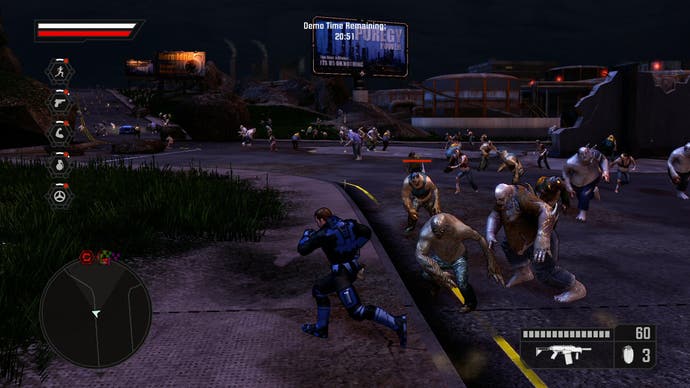
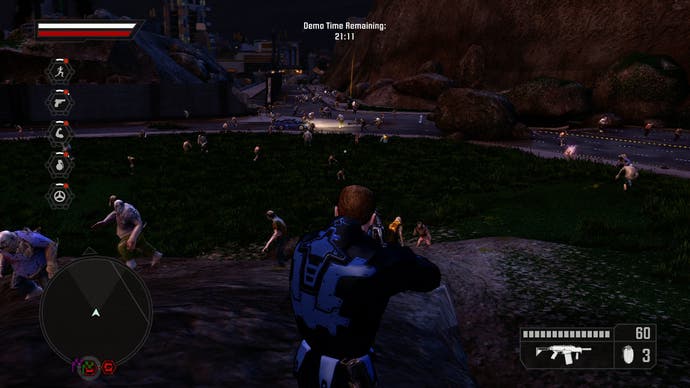
It also looks as though the developer has indulged in some tweaking of the Crackdown engine, and while the overall impression is positive, one thing that is apparent is that an additional layer of environment texture overlaid over the basic art has been removed.
To get an idea of what this actually means, here's a shot of Crackdown 2 compared to the original game. You will note, however, that Ruffian has added an animated foliage system, and we suspect that further comparisons would reveal other additions to make some areas of Pacific City look less sparse than they did in the first game.
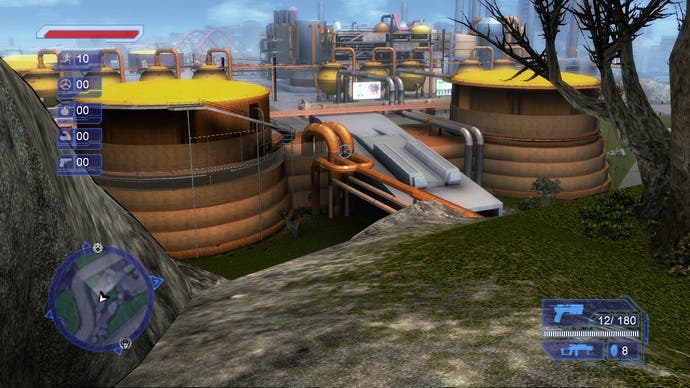
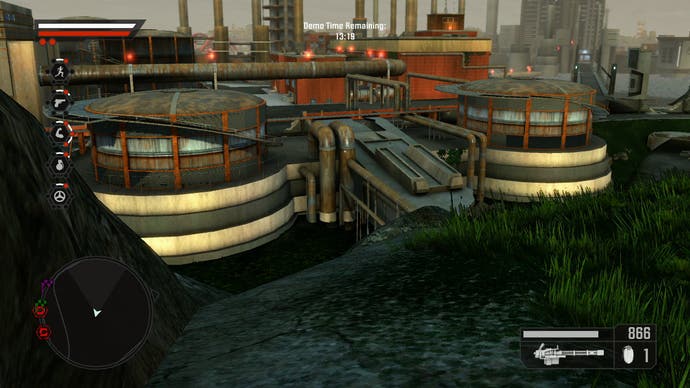
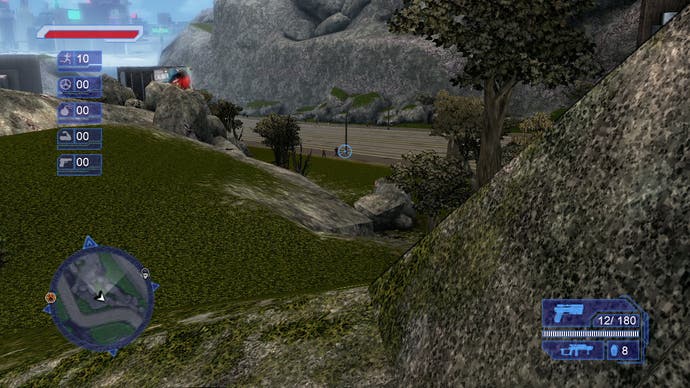

So there's no outstanding technical leap across the board as seen between, say, Uncharted and its sequel. It's clear Ruffian has sought to exploit the existing engine as much as possible in the pursuit of new gameplay opportunities instead.
The Crackdown single-player game used to be about the exploration, orb collection and annihilating territory-specific bosses. It's clear just from the initial stages of the demo that far more thought has gone into solo campaign this time around, with some pleasant surprises in how the orb-collection mechanic has been tweaked. Multiplayer has been similarly improved with the inclusion of more Agents and of course the new Xbox Live-specific agility orbs.
Ruffian has also managed to improve on the basic brilliance of the original Crackdown demo itself. For those that don't remember, the ability to accelerate the development of your Agent within the confines of the time-limited demo made for an experience that could be played in any number of ways: the replay factor in the sampler code alone was immense.
This has been expanded upon still further in the sequel with many more things to do, and at the same time it retains the option simply to explore the city collecting orbs. Additionally, 100 gamerscore can be earned within the demo itself, although you will need to buy the full game in order to get the unlocked Achievements.
The sheer amount of content in this demo makes it something of an essential download, a game in itself almost, like the original Crackdown demo before it. It'll be really interesting to see the full scope of the complete sequel, set for release in the UK on 9th July.
Update: The performance video has been updated with a fixed version with tear graph, which mysteriously - and rather annoyingly - disappeared from the original version.


.jpg?width=291&height=164&fit=crop&quality=80&format=jpg&auto=webp)
